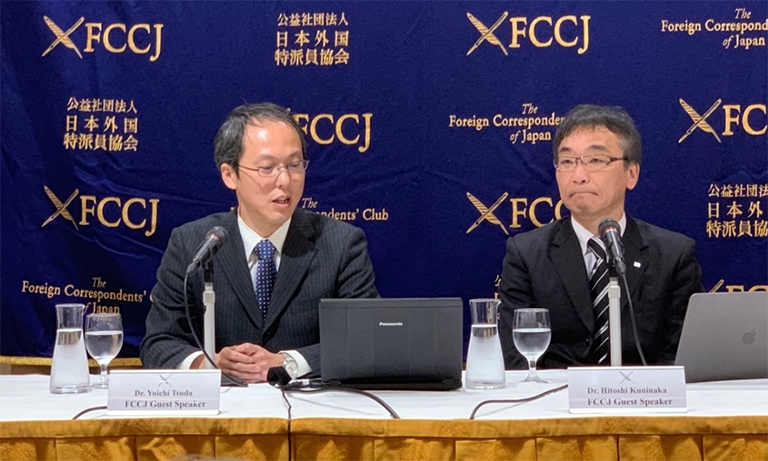TECH & CULTURE
Hayabusa 2 Ready to Land on Asteroid Ryugu in 2019, JAXA Reports
January 25, 2019

Groove X Inc. says its Lovot robot, unveiled Tuesday in Chuo Ward, Tokyo, provides owners with companionship. | YOSHIAKI MIURA
Speaking at the Foreign Correspondents’ Club of Japan on December 12, Hayabusa 2 Project Manager Yuichi Tsuda of JAXA’s Institute of Space and Astronautical Science (ISAS) and ISAS Director Hitoshi Kuninaka related the groundbreaking achievements made by the mission so far, and the tasks which still lay ahead.
The spacecraft was launched from Japan in 2014 with the mission of traveling to the asteroid Ryugu, deploying rovers onto its surface, and then descending to the surface itself to collect the largest samples ever taken from an asteroid. It arrived at its destination in June 2018.
According to JAXA, this mission has four goals. In addition to gathering more scientific information and exploring previously uncharted bodies in space, the information collected by Hayabusa 2 will also help improve planetary defense: “We are gaining the technology to identify hazardous asteroids prior to actual impact,” Project Manager Tsuda explained, “Universities and the U.N. are seriously studying this.” Finally, the mission is also looking into planetary resources, as asteroids such as Ryugu may potentially hold large quantities of water or useful minerals.